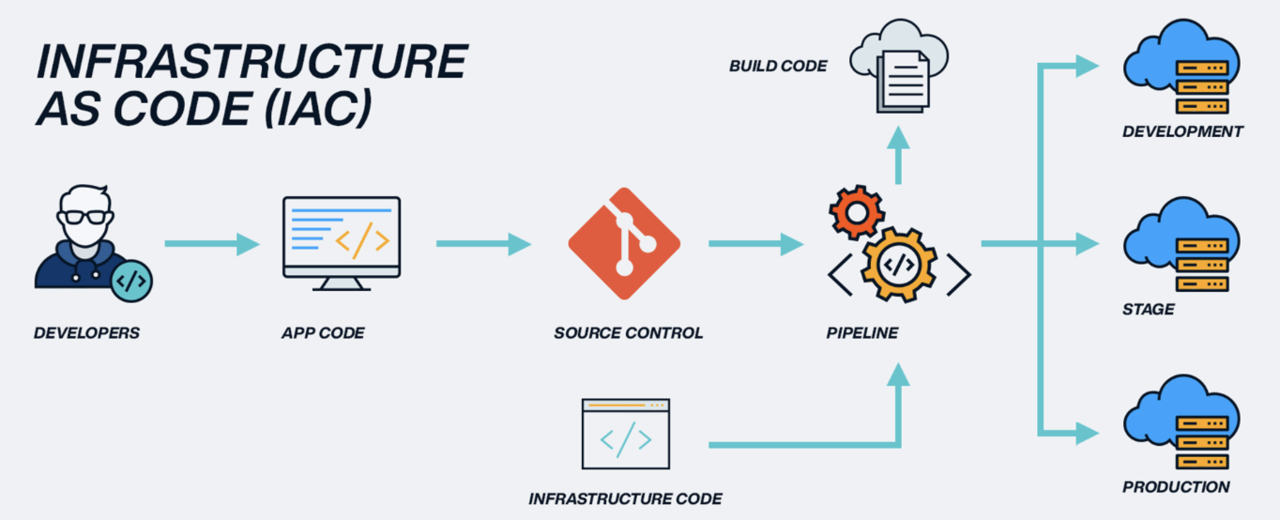
Enabling Infrastructure as Code (IaC) and CI/CD: Key Benefits for Customers
In today’s fast-paced technology environment, the need for rapid deployment of infrastructure and software is essential to remain competitive. Infrastructure as Code (IaC) and Continuous Integration/Continuous Deployment (CI/CD) are two methodologies that enable organizations to deliver their applications and infrastructure quickly, reliably, and securely. In this article, we will explore how to enable IaC and CI/CD and the key benefits they can provide to customers.
What is Infrastructure as Code (IaC)?
Infrastructure as Code (IaC) is a process of managing and provisioning infrastructure using machine-readable definition files instead of manual configuration. With IaC, organizations can define their infrastructure in a text file, which can be version controlled and deployed automatically using tools like Terraform, Ansible, and Chef. IaC provides several benefits, including:
- Version Control: Infrastructure definitions can be version controlled, which provides traceability and accountability for infrastructure changes. Version control systems enable you to see who made the changes, when they made them, and what changes were made.
- Reusability: IaC enables organizations to reuse code for infrastructure components like servers, databases, and networks. This helps to reduce duplication of effort and increases efficiency.
- Consistency: Infrastructure definitions can be tested and validated before deployment, which ensures consistency in the environment. This helps to prevent issues caused by manual configuration errors.
What is Continuous Integration/Continuous Deployment (CI/CD)?
Continuous Integration/Continuous Deployment (CI/CD) is a process of automating the testing, building, and deployment of code changes. With CI/CD, developers can quickly deliver code changes to production with confidence. CI/CD provides several benefits, including:
- Faster Time-to-Market: CI/CD enables organizations to deploy changes quickly, which helps to reduce the time it takes to bring new features to market.
- Improved Quality: CI/CD enables organizations to test code changes automatically, which helps to identify issues early in the development process.
- Reduced Risk: CI/CD enables organizations to deploy changes in a controlled and predictable manner, which reduces the risk of errors and downtime.
How to Enable IaC and CI/CD?
To enable IaC and CI/CD, organizations need to follow these steps:
Step 1: Define Infrastructure as Code
The first step is to define infrastructure as code using tools like Terraform, Ansible, or Chef. With IaC, infrastructure can be defined in a text file, which can be version controlled and deployed automatically.
Step 2: Create a CI/CD Pipeline
The second step is to create a CI/CD pipeline using tools like Jenkins, GitLab CI/CD, or Azure DevOps. With a CI/CD pipeline, code changes can be automatically tested, built, and deployed to production.
Step 3: Integrate IaC and CI/CD
The final step is to integrate IaC and CI/CD. This can be done by deploying infrastructure changes automatically as part of the CI/CD pipeline. This ensures that the infrastructure is consistent and up-to-date with the latest code changes.
Key Benefits of IaC and CI/CD for Customers
- Enabling IaC and CI/CD provides several benefits to customers, including:Faster Time-to-Market: IaC and CI/CD enable organizations to deploy changes quickly, which helps to reduce the time it takes to bring new features to market. This enables organizations to remain competitive and meet customer
- Improved Quality: IaC and CI/CD enable organizations to test changes automatically, which helps to identify issues early in the development process. Automated testing ensures that code changes meet the required quality standards before they are deployed to production. This reduces the risk of defects, security vulnerabilities, and performance issues.
- Reduced Costs: IaC and CI/CD help to reduce costs by automating repetitive tasks and reducing manual effort. This helps to minimize the time and effort required for infrastructure and software deployments. Automation also helps to reduce the risk of human error, which can lead to costly downtime and remediation efforts.
- Increased Agility: IaC and CI/CD enable organizations to be more agile by providing the ability to make changes quickly and efficiently. With IaC, infrastructure changes can be made in a matter of minutes or hours, compared to days or weeks with manual processes. This enables organizations to respond to market changes and customer feedback more quickly and efficiently.
In conclusion, IaC and CI/CD are essential methodologies for modern software development and infrastructure management. By enabling IaC and CI/CD, organizations can reduce the time it takes to deploy changes, improve the quality of their code, reduce costs, and increase agility. These benefits translate into improved customer satisfaction and increased competitiveness, which are essential in today's fast-paced technology environment.
Growth Driven Sales Consultant | Market Development | Data Analytics/ Visualization/ Engineering/ Streaming/ Integration | AWS Certified | Data Lake | Data Management | Storyboarding Data | ML | NLP | DevSecOps | k8s |
1yEnd-to-End CI/CD orchestration can be achieved by Platform Engineering solutions like Ozone. Pls feel free to signup &try at https://cd.ozone.one